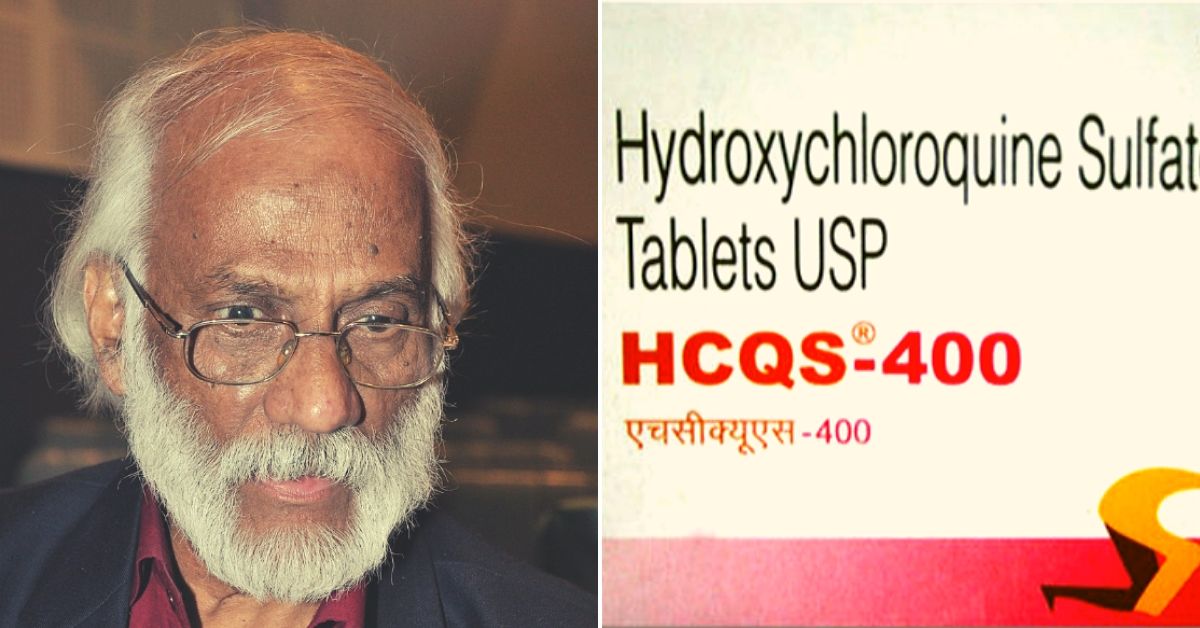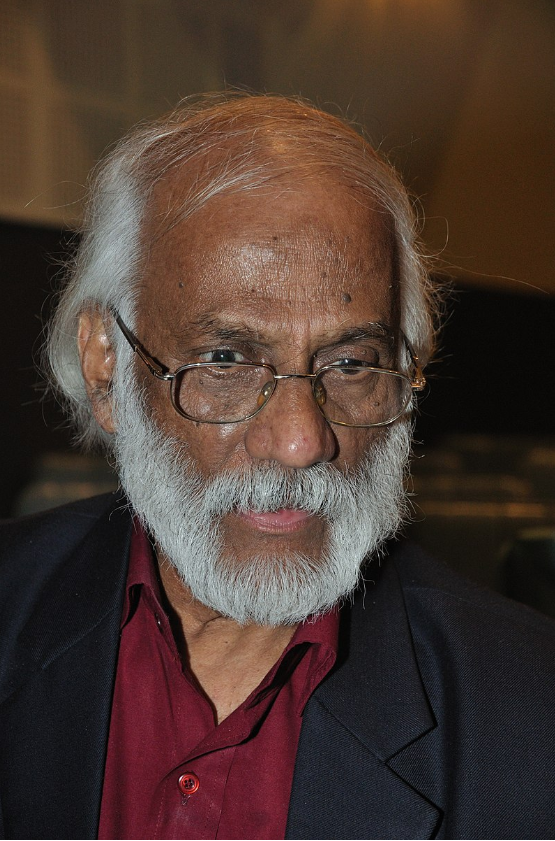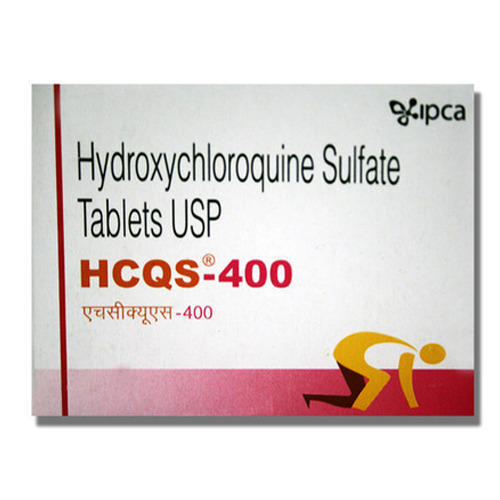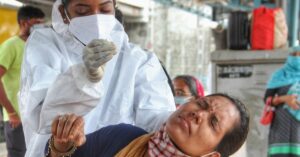Hydroxychloroquine the Answer to COVID-19? Ex-IISc Director & Malaria Expert Answers
With years of experience researching Malaria, Professor G Padmanaban is the right man to clarify why the anti-malarial Hydroxychloroquine is being pushed to the frontlines against COVID-19.

In its guidelines issued on 31 March, the Ministry of Health and Family Welfare (MoHFW) advised medical facilities to administer antimalarial drug Hydroxychloroquine and antibacterial Azithromycin to confirmed patients of the novel coronavirus (COVID-19). Until then, the MoHFW said that Hydroxychloroquine should only be given as preventive treatment to healthcare workers and contacts of confirmed cases.
“No specific antivirals have been proven to be effective as per currently available data. However, based on the available information (uncontrolled clinical trials), the following drugs may be considered as an off-label indication in patients with severe disease and requiring ICU management – Hydroxychloroquine 400 mg twice a day for one day, followed by 200 mg twice a day for 4 days, in combination with Azithromycin 500 mg once a day for 5 days,” said the revised guidelines issued at the end of last month.
With India promising to export Hydroxychloroquine to the United States, the drug has created a lot of buzz on social media with some praising the move while others chiding the government and advising them to first look after its domestic population’s needs.
The Better India spoke to Professor G Padmanaban, a renowned biochemist and former Director of the Indian Institute of Science (IISc), known for his work on malaria. Here are some insights in our conversation about the drug, his research into malaria and its potential efficacy in treating COVID-19.

1) When was the drug first adopted for malaria treatment in India?
Chloroquine was used by the United States in World War II to protect its army from malaria in South-East Asian regions. At the time of Independence, India had 75 million malaria cases in a total population of 330 mn. [The] Malaria eradication programme was initiated after independence and in the 1950s and 1960s, [with the] introduction of chloroquine to treat patients and DDT to control mosquitoes dramatically brought this number down to 100,000 in the 1970s. Subsequently, however, [the] usage of DDT was stopped and [the] malaria eradication programme took a back seat and disease bounced back. At present India has around 2 million cases per year.
2) Why is India a major centre for the production of this drug?
India makes generic drugs (out of patent) for the whole world and is referred to as the ‘pharmacy of the world’. The drugs which are out of patent are made in India at much cheaper rates and are exported.
Chloroquine/hydroxychloroquine belongs to this category.
“Against the projected requirement of Hydroxychloroquine (HCQ) of 1 crore tablets (including Health Workers dealing with COVID-19 patients, ICU cases and high risk contacts) the availability, as of now, is 3.28 crore tablets, which is 3 times more than required for domestic use in the country. In addition to this, about 2-3 crore more have been stocked up,” claims MoHFW in a press release issued on April 10.
3) Could you briefly talk to us about your research into malaria? What were some of your most significant findings?
My research on malaria has been in two areas.
One is to look at the molecule called heme (associated with haemoglobin). Heme plays a central role in malaria parasite biology. When the parasite is growing in the red cell, it degrades the haemoglobin giving rise to amino acids and heme. Parasite uses the amino acids for its own protein synthesis. The other component, heme, is in large quantities and is very toxic to the parasite. The parasite converts the free heme into a polymer called hemozoin, an inert brown pigment in the Food Vacuole. Chloroquine binds to free heme and prevents its conversion to the inert pigment. Accumulation of free heme is attributed to be the cause of parasite death.
We made the surprising finding that [the] parasite also makes heme using its own enzymes and genes in addition to getting it from haemoglobin. This enigma could be answered partially, when we found that if the parasite does not make its own heme, it cannot develop in the mosquito. We are looking at this pathway to block malaria transmission.
In a second project we have been looking at natural molecules for antimalarial activity. We have found curcumin from turmeric has antimalarial activity. In particular, a combination of curcumin and artemisinin derivative (ART) is very effective in [a] mouse model to cure simple as well as cerebral malaria. Recently, the Drug Controller General of India has approved a clinical trial to evaluate the efficacy of ART+curcumin to treat malaria patients and the National institute of Malaria Research (NIMR) will be doing the trial.
It would be interesting to evaluate curcumin as an adjunct food supplement to prevent SARS-2 infection.
The Better India’s “BETTER TOGETHER” initiative has brought together civil service officers from across the country as they help migrant labourers, daily wage earners, frontline workers, and all those who need our help most in these troubled times. You can join us and support them in this fight against COVID-19.
Unable to view the above button? Click here
4) It has been touted as a drug that can be used to treat patients with COVID-19, although many have disputed this claim. Without proper testing, is it safe for us to test this on human patients?
The Chinese and French groups have used chloroquine phosphate and hydroxychloroquine in clinical trials and shown that the drug is effective. The French group has also shown that HCQ in combination with azithromycin is more effective. The criticism has been that the trials are not of appropriate international standards. In the absence of any other drug, vaccine available, HCQ has been adopted in the US and few other countries. Recently, India also has approved this combination (TV news). However, the United Kingdom wants to wait for trial results. There is also a news report that Swedish hospitals have stopped using [it] in view of side effects.
The study conducted by a group of French researchers was published in the International Journal of Antimicrobial Agents on March 20. They conducted their study based on reports that “Chloroquine and hydroxychloroquine have been found to be efficient on SARS-CoV-2, and reported to be efficient in Chinese COV-19 patients.” However, “depending on their clinical presentation, azithromycin was added to the treatment.” Despite its small sample size of 6 asymptomatic patients, 22 with upper respiratory tract infection symptoms and 8 lower respiratory tract infection symptoms, “our survey shows that hydroxychloroquine treatment is significantly associated with viral load reduction/disappearance in COVID-19 patients and its effect is reinforced by azithromycin.”
5) Is there any specific thing or characteristic about this drug that the people of India should know considering all the noise today about its efficacy in treating COVID-19?
The mechanisms proposed are all based on the knowledge gained with the malaria parasite. The drug can enter the endosome (equivalent to the food vacuole in the malaria parasite) and increase the pH. The endosome is normally acidic and that is required for the virus to replicate. When the pH increases, the drug gets trapped in the endosome (it cannot come out) and inhibits viral multiplication. Very recently, it has also been proposed that free heme derived from haemoglobin (outside the red cell) is responsible for the Acute Respiratory Syndrome, ARDS). As already mentioned, HCQ can bind free heme and relieve the toxicity.

Among antimalarials, chloroquine is considered to be the safest and in use for several decades. However, chloroquine resistance is widespread in falciparum malaria, although it is still effective in Vivax malaria. For Falciparum malaria, the drug of choice is ART-based combination. In the case of COVID-19, the side effects of HCQ treatment are not fully known. Since, some countries have adopted the same and doing trials, adequate data on efficacy and safety would soon be available. The public needs to be aware that it is a prescription drug and clinicians should decide when to use it. Self-medication needs to be strictly avoided.
Also Read: ‘Not Scared of COVID-19’: A Doctor Shares What Happens in Isolation Wards
(Edited by Saiqua Sultan)
Like this story? Or have something to share? Write to us: [email protected], or connect with us on Facebook and Twitter.
If you found our stories insightful, informative, or even just enjoyable, we invite you to consider making a voluntary payment to support the work we do at The Better India. Your contribution helps us continue producing quality content that educates, inspires, and drives positive change.
Choose one of the payment options below for your contribution-
By paying for the stories you value, you directly contribute to sustaining our efforts focused on making a difference in the world. Together, let's ensure that impactful stories continue to be told and shared, enriching lives and communities alike.
Thank you for your support. Here are some frequently asked questions you might find helpful to know why you are contributing?


This story made me
-
97
-
121
-
89
-
167














